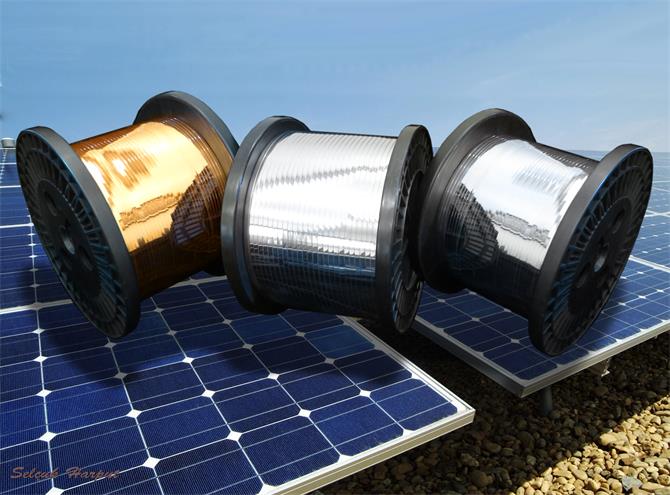Solar Ribbon: Using some basic tools and good construction technique, you can make solar panel that is similar to or even better than a commercially manufactured panel.
List of materials required to make solar panel
* Tab ribbon (narrow)
* Bus ribbon (wide)
* Aluminum bar stock
* Aluminum sheet (rigid)
* PV cells
* Fiberboard for layout board
* Screws and nuts
* Solder
* 2-position barrier block
* Electrical tape
Tools needed to make solar panel
* Soldering iron
* Caulking gun
* Paint brush to spread caulk
* Hacksaw
* Screwdriver
* Pencil
* Ruler
* Drill
Panel output
To make a solar panel, you must always know the final wattage, volts, or amps that you want your solar panel to produce. Your solar panel must always use the same size and same type of solar cells.
Watt output =volts x amps
Number of cells you will need
Calculate the number of cells you need according to the amount of voltage you want from the panel.
Panel layout
Now we need to plan about the panel layout.
Panel length and width
Considering the total length of the cells, space in between the cells, frame allowance, top and bottom clearance, calculate the total panel length and total panel width.
Bar stock
For the frame we need four pieces of bar stock. Two should be of the width of the panel for the horizontals and the two verticals of the length of the panel
Cut and apply the tab ribbon
For connecting the cells to each other and to the bus strips, cut the tab ribbon. Attach each cell to 4 pieces of tab ribbon where 2 pieces are soldered to the negative side which is blue and 2 pieces are soldered to the positive side which is silver. Now solder 2 pieces of tab ribbon to the back of each cell.
Make a layout template
Now it is the time to make a layout template. Cut a sheet of fiberboard to fit in the sidebars of the panel. Draw the layout using pencil and ruler, for the cells, tab and bus connectors.
Solder the cells together
Solder the cells together on the layout template. The tab ribbons which are connected to the positive (back) of each cell are soldered to the negative (face) of the next cell in the string. Place each cell in the right position on the template and then solder it to the face of the next cell.
On every string, one end with 2 long tab ribbons extending out from the back of the cell is the positive end of the string. Whereas the other end of the string with no tab ribbon connected to its face is the negative end of the string. Strings of cells should alternate in direction, so that they can easily be connected in series (positive to negative).

